3DMark Vantage and 3DMark 11
Synthetic benchmark developed by Futuremark, 3DMark Vantage necessarily require the presence in the system of a video card with support for DirectX 10 API and a Windows Vista or 7 operating system. The benchmark consists of 6 separate tests: 4 focused on the GPU and 2 on the CPU. The tests are performed in up to 4 presets configured by Futuremark, characterized by a different level of workload in order to better reproduce the typical scenario of use of your system depending on the hardware configuration in use. The software allows you to set the Entry, Performance, High and Extreme configuration. The tests were done only in Entry, Performance and High mode.
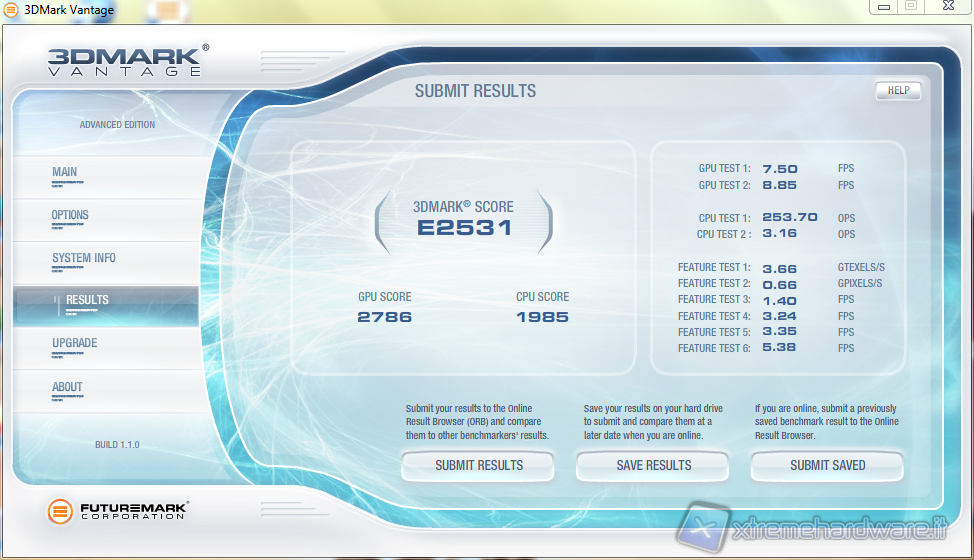
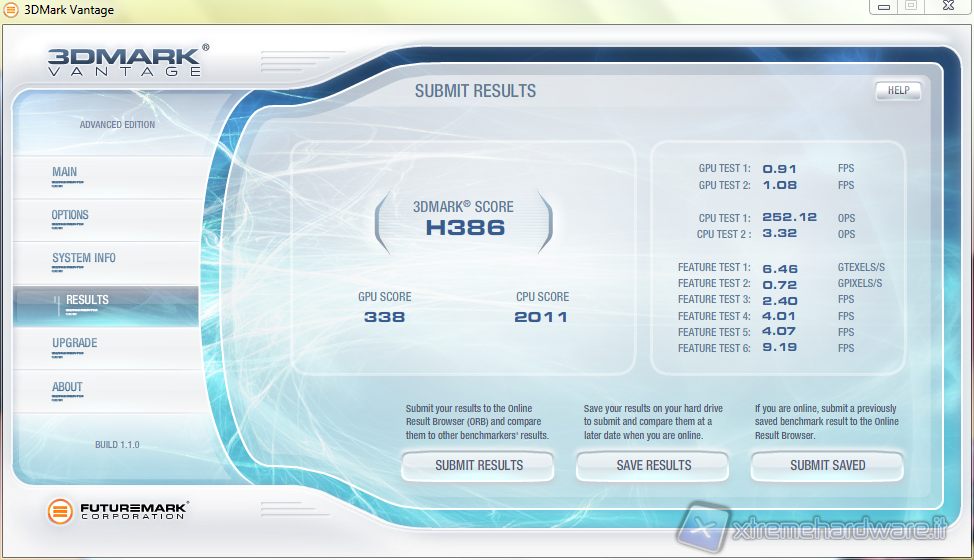
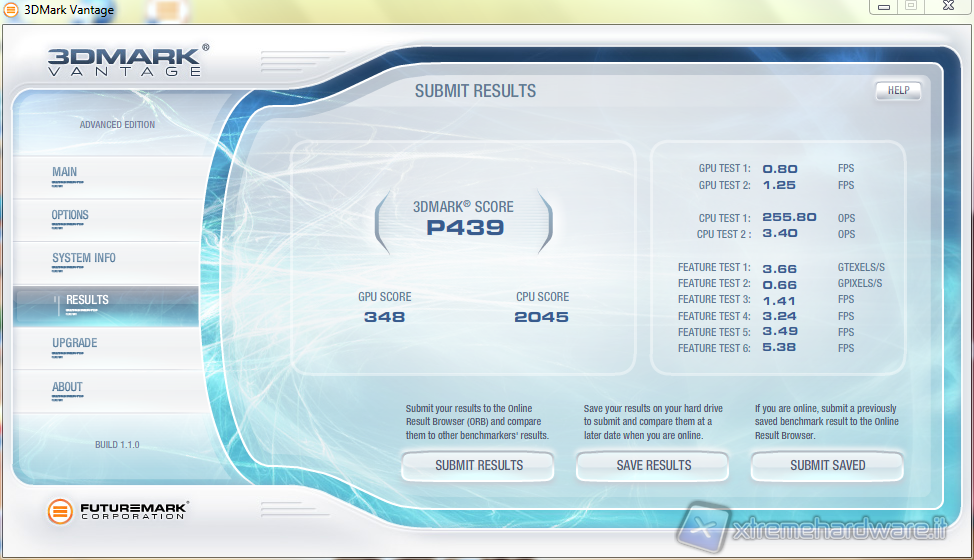
Penultimate benchmark produced by Futuremark (Before PCMark 7), 3DMark 11 requires the presence in the system of a video card with support for DirectX 11 API. The developer software house says that testing on the tessellation, volumetric lighting and other effects used in modern games make the benchmark modern and indicative of the actual performance of video cards. The software is available in two versions, 3DMark 11 Free and 3DMark 11 Advanced Edition, which allows you to set the benchmark in three modes of DX11, Performance, High and Extreme. The first test scenario based on the Deep Sea, does not apply the tessellation but it uses a marked system of lighting and shadows. The second test, again based on Deep Sea, apply a medium level of tessellation and reduces, even in this case at the intermediate level, lighting. The third graphic test, based on the High Temple scenario, has a level of tessellation medium and low lighting. There are also tests run by the CPU related to physics, the benchmark does not actually exploit the NVIDIA PhysX technology.
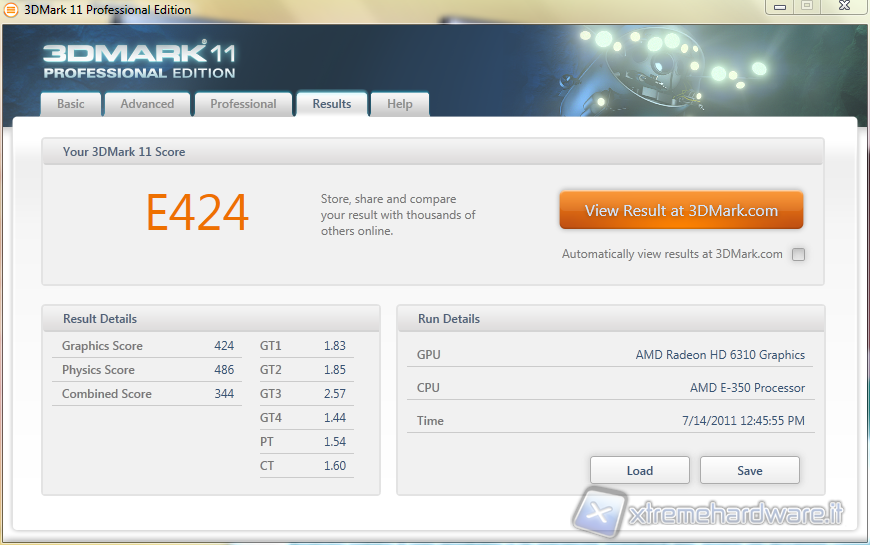
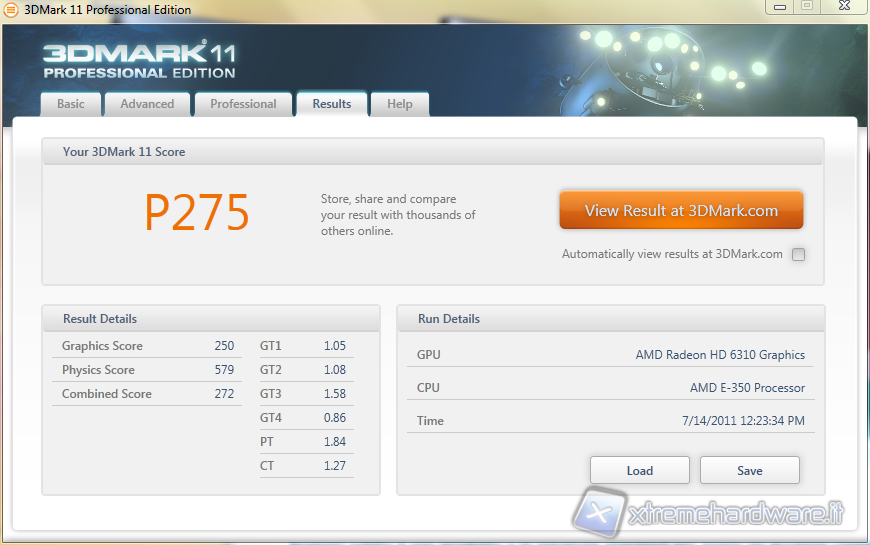
Tests show a lack of performance in 3D applications given the absence of a dedicated video card.

